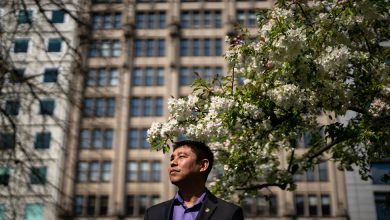In Frigid Texas, Will the Power Grid Be Able to Keep the Heat On?

Millions of Texans waking up to wickedly cold air on Tuesday will be hoping that the state’s power grid, which failed spectacularly during a deep freeze in 2021, holds up this time.
The early hours of the day will be a crucial test for the power supply as wind chills fall below zero in cities like Austin, Dallas and San Antonio and as many offices reopen after the Martin Luther King’s Birthday long weekend.
The operator of the state’s grid, the Electric Reliability Council of Texas, has asked Texans to limit energy use between 6 a.m. and 9 a.m. on Tuesday.
The council said the request “does not indicate ERCOT is experiencing emergency conditions at this time,” adding that the request was a “widely used industry tool that can help lower demand for a specific period of peak demand time.”
Brutal winter weather in February 2021 caused Texas’ electricity grid to fail, leading millions to lose power for days and contributing to the deaths of more than 240 people.
Officials in Texas have taken steps to prevent such critical infrastructure from failing again when demand increases during the cold. Since 2021, the state has expanded the amount of solar power on the grid, in addition to large amounts of wind energy.
Even as officials project confidence in the bolstered electrical grid, ERCOT is not ruling out the possibility of rolling blackouts, in which electricity is shut off to certain areas at a time and then restored. This emergency measure is meant to avoid demand overwhelming the grid and leading to widespread, prolonged outages.
Winter mornings are particularly taxing on the grid. Temperatures are near their lowest; the wind, driving the electrical turbines, is often quiet; and the sun, powering the solar panels, is not strong enough.
Several Texas mayors implored residents to take precautions in the extreme cold. In Austin, warming shelters were slated to remain in operation through Tuesday morning after housing 400 people overnight, many of them vulnerable homeless people at risk of hypothermia.
“It is very, very cold,” Mayor Kirk Watson of Austin said on Monday.
Classes have been canceled for Tuesday in some populous school districts, including Dallas’s, and on some big college campuses, such as Texas A&M, and that could lessen expected electricity demand.
So far, the system has withstood the latest deep freeze. ERCOT said there were no power disruptions on Monday morning when electricity use surpassed a previous record of peak winter demand set during the cold snap of December 2022. But Tuesday’s strain could be greater.
A forecast by ERCOT estimated that if temperatures in January fall as low as they did in December 2022, there would be about a one-in-six chance of rolling blackouts during the mornings around 8 a.m.
And while a lot of attention is focused on Texas, it is far from the only place hoping that crucial utility infrastructure doesn’t fail under the strain of the cold weather.
In 2021, while millions of Texans found themselves without electricity, many people in the Mississippi capital, Jackson, were without water for weeks. And on Christmas in 2022, tens of thousand of people in Jackson did not have running water because the system’s pipes could not withstand the subfreezing temperatures.
One of Jackson’s water plants was built in 1914 and some of the city’s water issues stem from the age the city’s infrastructure. As freezing temperatures become more frequent in the South, infrastructure that wasn’t built for such cold has been vulnerable.
“We’ve made a lot of improvements in facilities that were never built for cold weather,” said Ted Henifin, the interim manager of the city’s drinking water system. “We’re feeling good about where we are.”
David Montgomery contributed reporting from Austin, Texas.





